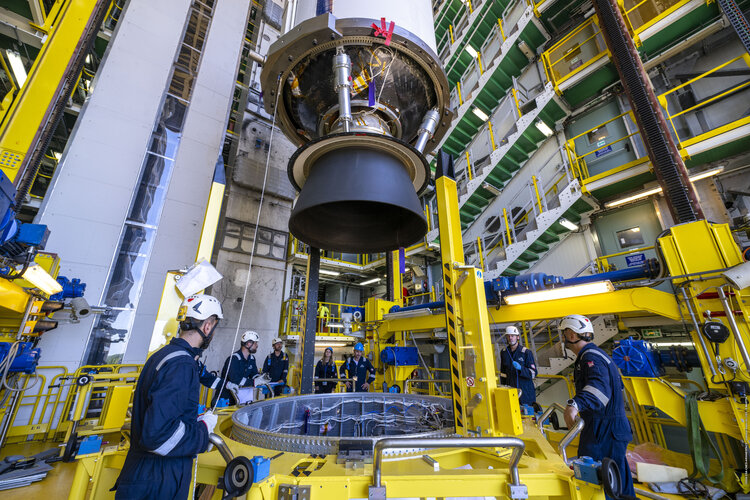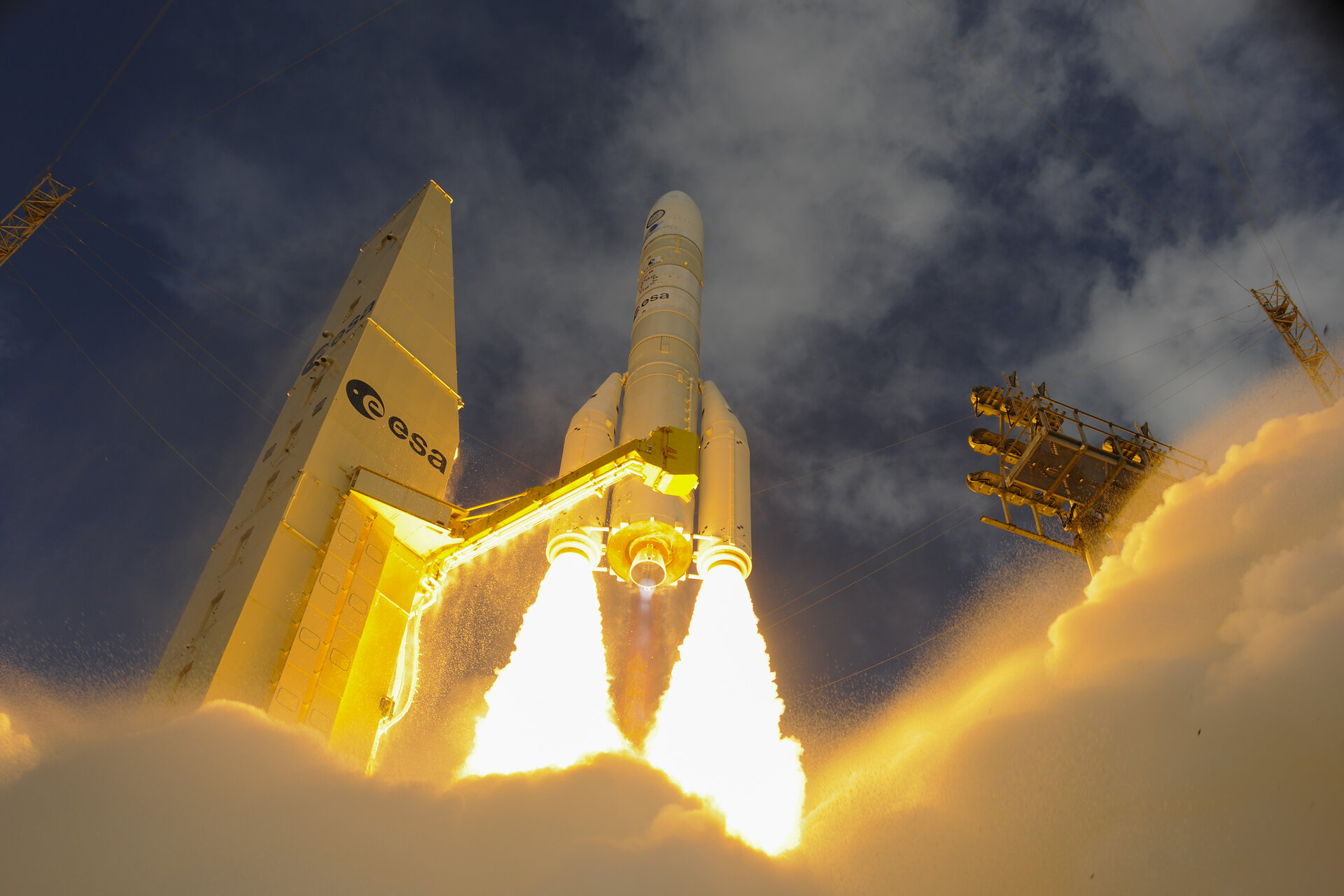#launchers
Call for interest: Sentinel-1C launch media event
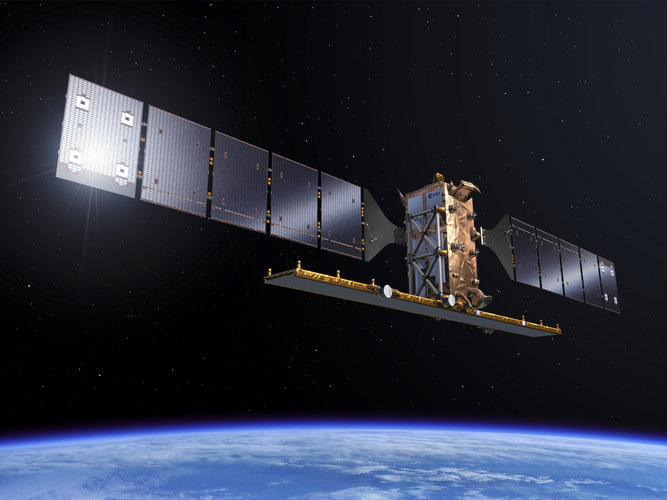

Call for interest: Sentinel-1C launch media event
#launchers #space #science #esa #europeanspaceagency
posted by pod_feeder_v2
A look back at Sentinel-2C's ride into space on Vega
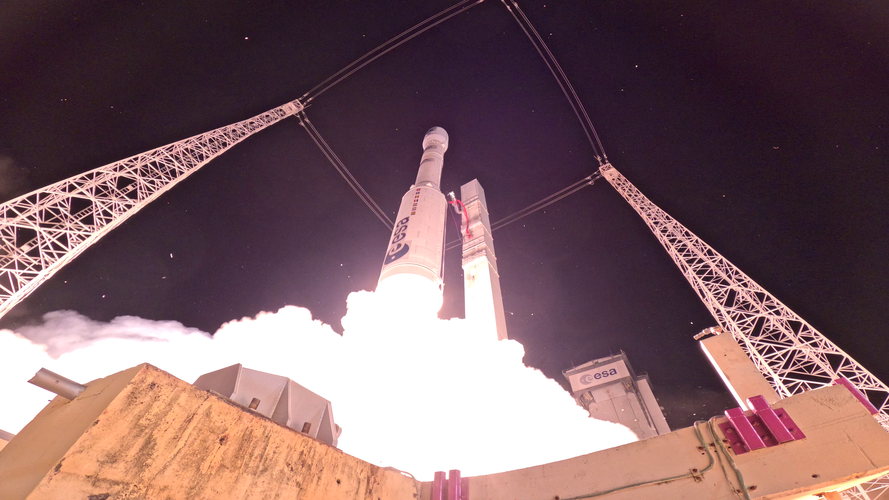
 Video: 00:01:21
Video: 00:01:21
The third Copernicus Sentinel-2 satellite, Sentinel-2C, has launched aboard the last Vega rocket, flight VV24, from Europe’s Spaceport in French Guiana. The rocket lifted off on 5 September at 03:50 CEST (4 September 22:50 local time).
Sentinel-2C will provide high-resolution data that is essential to Copernicus – the Earth observation component of the European Union’s Space programme. Developed, built and operated by ESA, the Copernicus Sentinel-2 mission provides high-resolution optical imagery for a wide range of applications including land, water and atmospheric monitoring.
The mission is based on a constellation of two identical satellites flying in the same orbit but 180° apart: Sentinel-2A and Sentinel-2B. Together, they cover all of Earth’s land and coastal waters every five days. Once Sentinel-2C is operational, it will replace its predecessor, Sentinel-2A, following a brief period of tandem observations. Sentinel-2D will eventually take over from Sentinel-2B.
Sentinel-2C was the last liftoff for the Vega rocket – after 12 years of service this was the final flight, the original Vega is being retired to make way for an upgraded Vega-C.
Access the related broadcast quality video material.
#launchers #space #science #esa #europeanspaceagency
posted by pod_feeder_v2
Space Team Europe for Vega: final liftoff
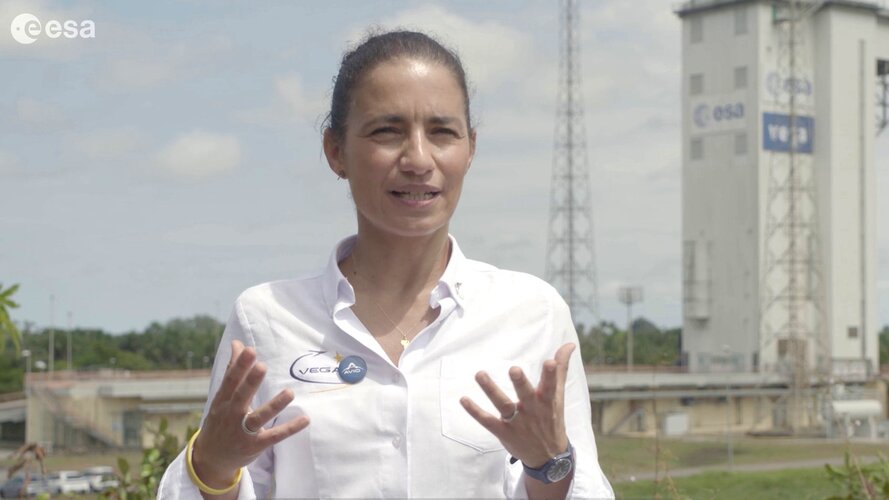
 Video: 00:03:13
Video: 00:03:13
Interviews with personnel that worked on the last Vega rocket, flight VV24, with Sentinel-2C onboard.
The third Copernicus Sentinel-2 satellite launched from Europe’s Spaceport in French Guiana aboard the final Vega rocket on 5 September at 03:50 CEST (4 September 22:50 local time).
After a successful launch, Sentinel-2C separated from its Vega rocket at approximately 04:48 CEST. Around 14 minutes later, at 05:02 CEST, ESA’s ESOC mission operations centre in Darmstadt, Germany, received the all-important first signals from the satellite indicating that it had safely arrived in orbit.
Giovanna Manca, Vega launch complex operations manager for Avio, Fulvio Spaziani Brunella, Site manager for Avio, Claude Legrand, Quick-look telemetry display technical authority for Arianespace, Renato Lafranconi, Vega programme manager at ESA, and Francesca Diciolla, Environmental safety manager for Avio explain their roles in the Vega story.
The last Vega flight ended three Sentinel 2 launches, the Sentinel-2A and Sentinel-2B satellites were launched on Vega marking a logical conclusion to Vega’s stellar roster of satellites launched. Other missions launched by the small and nimble rocket over its lifetime are flagship ESA missions such as technology demonstrator Proba-V, wind monitoring satellite Aeolus, the reentry vehicle IXV and a forerunner to LISA that will measure gravitational waves in space.
Vega ensured that Europe has a versatile, independent access to space, complementing the Ariane family of rockets to launch any satellite to any orbit – continuing with Vega-C and Ariane 6.
Find more videos from Space Team Europe.
#launchers #space #science #esa #europeanspaceagency
posted by pod_feeder_v2
Last Vega with Sentinel-2C on the launch pad
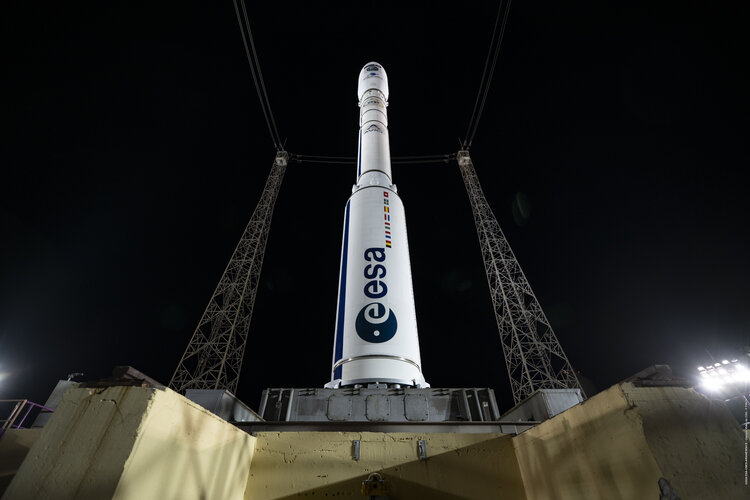
 Image: Last Vega with Sentinel-2C on the launch pad
Image: Last Vega with Sentinel-2C on the launch pad
#launchers #space #science #esa #europeanspaceagency
posted by pod_feeder_v2
ESA for Vega: the story

 Video: 00:05:40
Video: 00:05:40
Vega joined the family of launch vehicles at Europe’s Spaceport in French Guiana in 2012. At 30-m tall the rocket weighs 137 tonnes on the launch pad and reaches orbit with three solid-propellant powered stages before the fourth liquid-propellant stage takes over. By rocket standards Vega is lightweight and powerful, the first three stages burn through their fuel and bringing Vega and its satellites to space in just six minutes.
Specialising in launches of small satellites to orbits flying over Earth’s poles, Vega has an impressive roster of missions that it has sent to space. Flagship ESA missions that flew Vega include technology demonstrator and Earth vegetation watcher Proba-V and wind-monitoring satellite Aeolus. Vega’s heaviest payload launched was the 1906-kg LISA Pathfinder, a forerunner to LISA that will measure gravitational waves in space..
In 2015 Vega launched three ESA missions in one year, including reentry demonstrator IXV that showed Europe has the technology to launch a vehicle to space and return it safely to Earth. In less than two hours Vega accelerated IXV to speeds of 27 000 km/h at a height of 412 km before the reentry vehicle splashed down in the Atlantic Ocean. This demonstration mission was a precursor to the reuseable Space Rider spacecraft that will offer regular access to space for research and in orbit validation and demonstration missions and is paired with the Vega family of launchers.
With its Vespa secondary payload adapter, first launched in 2013 on Vega’s second flight, Vega offered different options for payload ride-sharing where multiple satellites are launched on one rocket. In 2020 a variant of Vespa called the Small Spacecraft Mission Service transported over 50 satellites at once to orbit.
Sentinel-2C is the last payload that the Vega rocket launches into space – after 12 years of service. Fittingly the Sentinel-2A and Sentinel-2B satellites were launched on Vega marking a logical conclusion to Vega’s stellar roster of satellites launched.
#launchers #space #science #esa #europeanspaceagency
posted by pod_feeder_v2
Ariane 6 blueprint
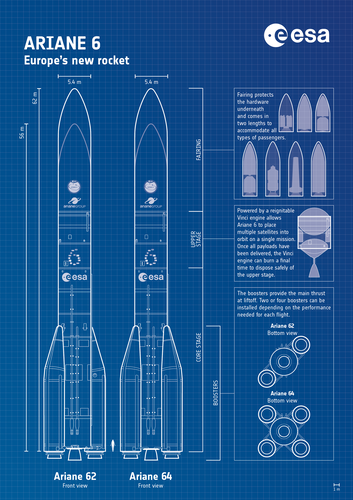
 Image: Ariane 6 blueprint
Image: Ariane 6 blueprint
#launchers #space #science #esa #europeanspaceagency
posted by pod_feeder_v2
Omega: Subscription-based space mobility service gets a boost

 Image: Omega: Subscription-based space mobility service gets a boost
Image: Omega: Subscription-based space mobility service gets a boost
#launchers #space #science #esa #europeanspaceagency
posted by pod_feeder_v2
Space Team Europe for Ariane 6: Ambra Pedrazzini
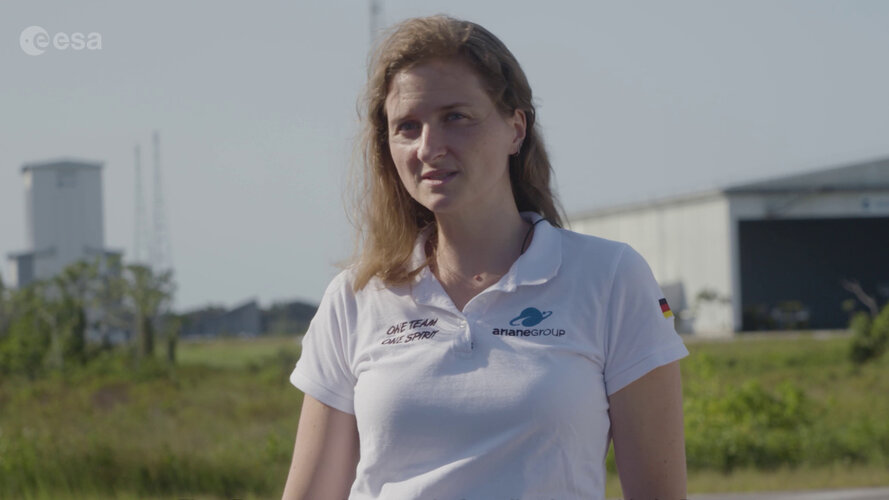
 Video: 00:02:41
Video: 00:02:41
After taking an astronomy class in school, Ambra Pedrazzini now works for Arianespace on Europe’s newest rocket, Ariane 6. With past experience on Ariane 5, Ambra is now Fluid and Mechanical Interfaces Functional Assistant for the Ariane 6 upper liquid propulsion module.
Having worked on the development and implementation of the automatic programmes used during Ariane 6 launch campaign tests at Europe’s Spaceport in French Guiana, Ambra was then part of the team in charge of the rocket’s qualification tests. Ambra is responsible for ‘functional testing’ – verifying that the rocket and its associated launch pad are ready for the launch chronology and firing tests.
With many different contributors from CNES, ESA and Arianespace, what is so special about working on Ariane 6 is the team spirit. With something as complex as rocket science, everyone must work together.
Ariane 6 launched from Europe's Spaceport in French Guiana at 16:00 local time (20:00 BST, 21:00 CEST), designed to provide more launch power with higher flexibility and at a lower cost than its predecessors. The launcher’s configuration – with an upgraded main stage, a choice of either two or four powerful boosters and a new restartable upper stage – will provide Europe with greater efficiency and a wider range of launch services, including for the launch of multiple payloads into different orbits on a single flight.
Find more videos from Space Team Europe.
#launchers #space #science #esa #europeanspaceagency
posted by pod_feeder_v2
YPSat witnesses ISTSat-1 & 3Cat-4 CubeSats deployment from Ariane 6
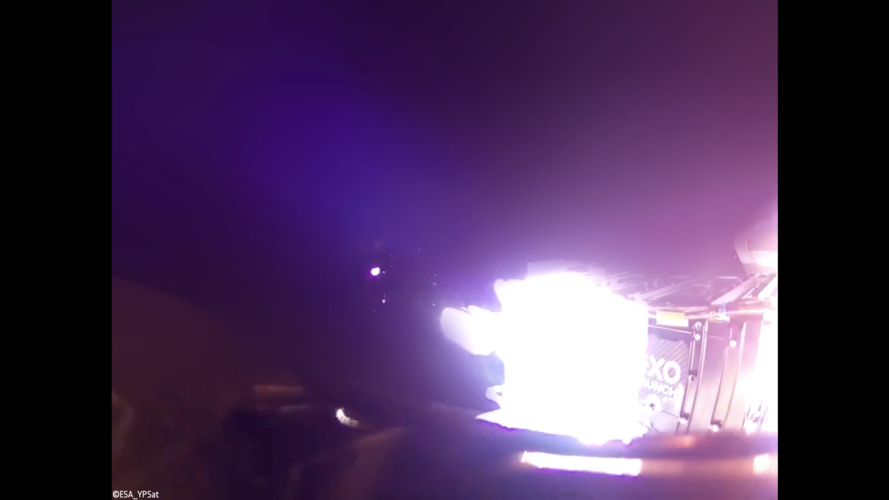
 Video: 00:00:15
Video: 00:00:15
Video returned from the ESA Young Professionals Satellite payload, YPSat, attached to the upper stage of the inaugural Ariane 6 rocket, launched on 9 July 2024. This clip shows two cubesats deployment into orbit from the Exolaunch dispenser: The first CubeSat is ISTSat-1 and the second is 3Cat-4, both supported by ESA Education initiatives. The video has been enhanced to highlight these events, that were part of the key mission objectives for YPSat. The YPSat project represents the culmination of about two and a half years of dedication and hard work core team of about 30 Young Professionals from various ESA Establishments, Directorates and disciplines.
#launchers #space #science #esa #europeanspaceagency
posted by pod_feeder_v2
Science after school experiment sends back stunning snaps

 Image: Science after school experiment sends back stunning snaps
Image: Science after school experiment sends back stunning snaps
#launchers #space #science #esa #europeanspaceagency
posted by pod_feeder_v2
PariSat school experiment sends back stunning Earth pics

 Image: PariSat school experiment sends back stunning Earth pics
Image: PariSat school experiment sends back stunning Earth pics
#launchers #space #science #esa #europeanspaceagency
posted by pod_feeder_v2
Black body experiment captures Pale Blue Dot

 Image: Black body experiment captures Pale Blue Dot
Image: Black body experiment captures Pale Blue Dot
#launchers #space #science #esa #europeanspaceagency
posted by pod_feeder_v2
Space Team Europe for Ariane 6: We did it!
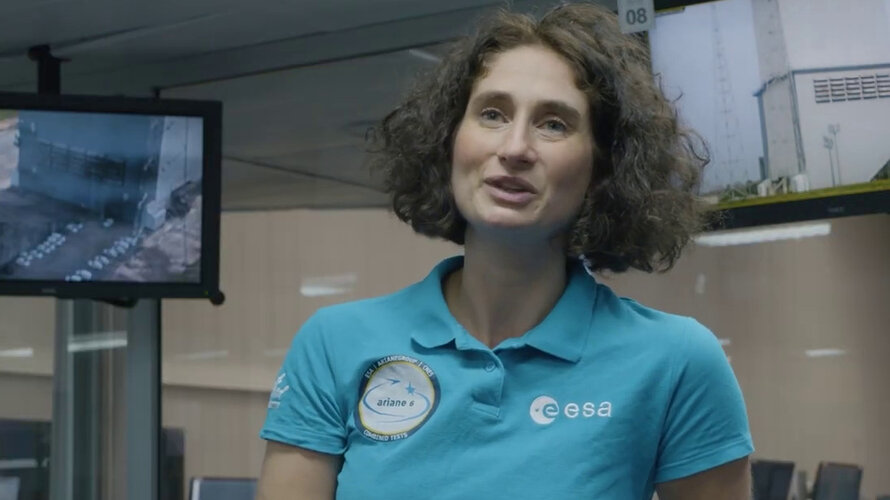
 Video: 00:02:44
Video: 00:02:44
After many long hours, working through the night, plenty of sacrifices, tense moments during countdown and hot-fire tests – as well as months spent in masks and keeping a safe distance during the COVID-19 pandemic – Space Team Europe has done it. Ariane 6 took flight on 9 July 2014 and restored Europe’s autonomous access to space.
Thousands of people from different backgrounds, with different nationalities and speaking different languages all united around a shared vision: taking Europe to space.
Thank you Space Team Europe for your commitment, incredible team spirit and expertise. Go Ariane 6!
Ariane 6 launched on 9 July 2024 from Europe's Spaceport in French Guiana at 16:00 local time (20:00 BST, 21:00 CEST). Europe’s newest heavy-lift rocket, it is designed to provide great power and flexibility at a lower cost than its predecessors.
The launcher’s configuration – with an upgraded main stage, a choice of either two or four powerful boosters and a new restartable upper stage – will provide Europe with greater efficiency and possibility as it can launch multiple missions into different orbits on a single flight.
Find more videos from Space Team Europe.
#launchers #space #science #esa #europeanspaceagency
posted by pod_feeder_v2


